3.06 oz Engraved Contention Silver Ingot, Dated 12/25/1880
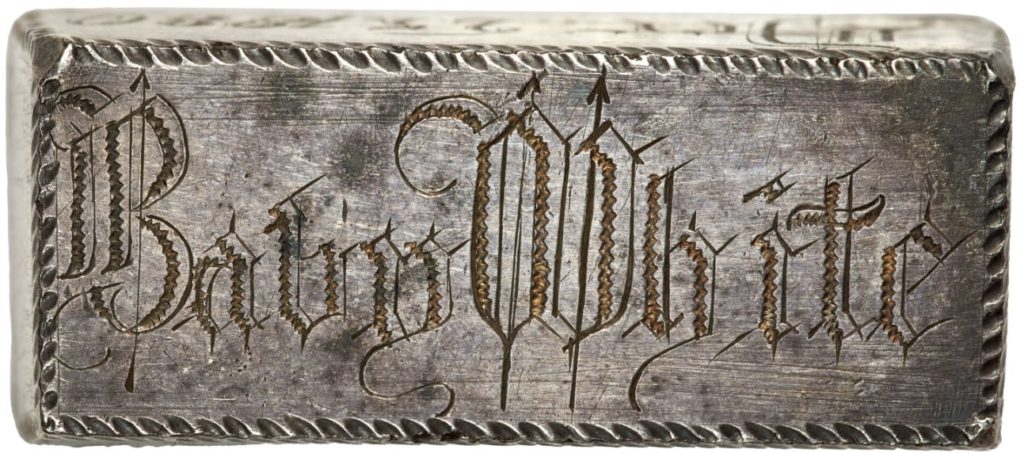
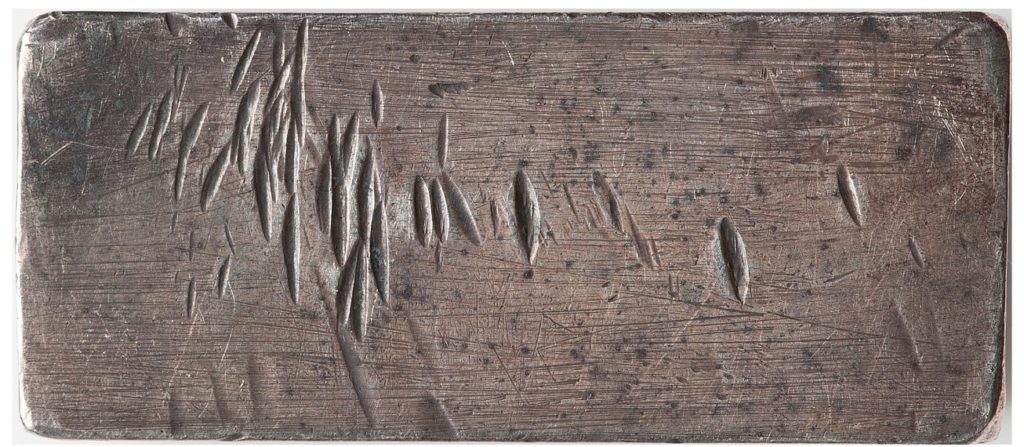
8mm x 17mm x 40mm. Medium lilac-gray patina over smooth surfaces. Ornate engraving on the face reads: Baby White. Similar engraving on the long edges reads: Contention and Dec. 25, 1880. The corners of the ingot show fine scroll work. The ends are unadorned, and the back has several scattered punch marks from the time of the ingot’s creation.
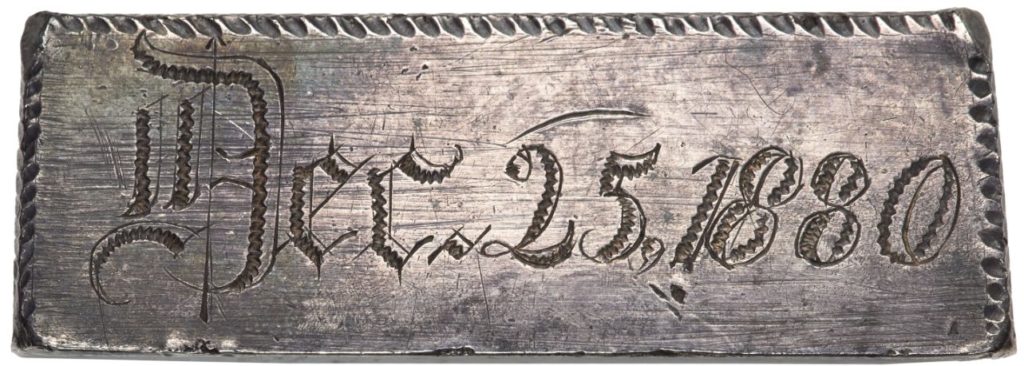
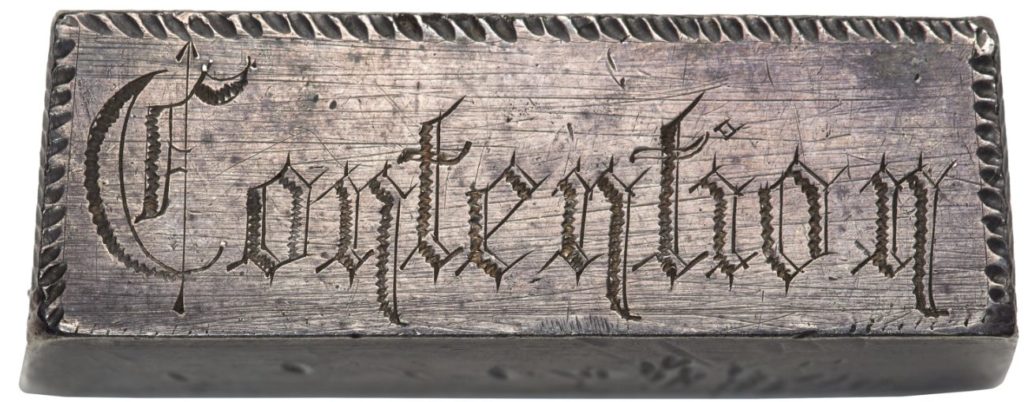
The ghost town known today only as ruins on the bank of the San Pedro River, was once a thriving silver mining town. Contention City, Arizona, was at one point expected to rival if not surpass the town of Tombstone, being located just 10 miles northwest. Old West history sees numerous connections between the two towns, including the legendary gunfight just down the street from the O.K. corral, where the three Earp brothers — Virgil, Morgan, and Wyatt — along with Doc Holliday, faced off against a band of cowboy bandits after pursuing them following the murder of stagecoach drivers who were en route from Tombstone to the Benson train terminal. It had been an attempted robbery of the silver bullion the stagecoach had been carrying. The attempted robbery and the murders took place just outside Contention City, before the Earps’ pursuit of the cowboys with Holliday ended in the fabled gunfight at Tombstone 10 miles away. After the gunfight, Ike Clanton attempted to have Wyatt Earp and Doc Holliday tried in Contention City for their actions in the gunfight, suggesting murder, since only Virgil Earp was officially a deputy U.S. Marshal; however, no trial was ever held there, and the charges were dismissed. A grand jury decision known as the Spicer Hearing saw the Earps and Holliday released from legal guilt.
Contention City was founded in 1879, on the bank of the San Pedro river, in order to supply much needed water to the mining efforts of the Contention Mine, which was 12 miles away. A post office was established there in April 1880. Eventually, three stamp mills were constructed in Contention City, serving not only the Contention Mine, but also the Tombstone-area mines, due to Contention City’s close proximity. In total, 65 stamps existed in the three mills, run by 80 men. The town was abandoned in 1888, following the closure of the Tombstone mines due to flooding. Foundations of some of the buildings that comprised Contention City can still be seen today.
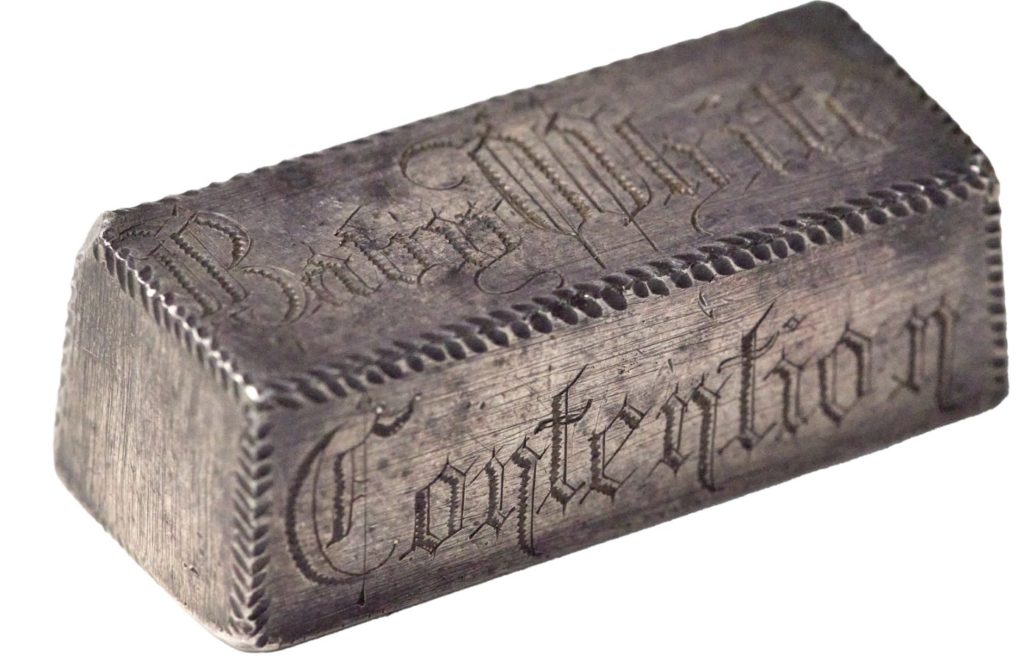
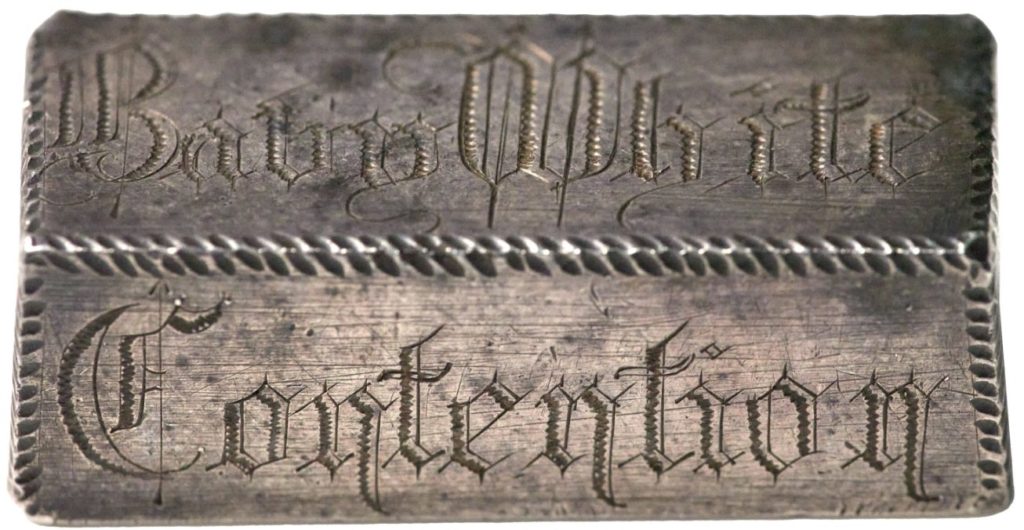
The current engraved ingot undoubtedly comes from Contention City in its heyday. It is a presentation piece, commemorating, likely, the birth of a baby to the White family on Christmas Day, 1880. According to the United States Census, Contention City had a population of 150 people that year. We encourage the winning bidder to unearth the identity of a White surname in Contention City in 1880, potentially among the reported 10 married couples who helped settle the town earlier in the year.
Contention was once dubbed “The Comstock of Arizona”.
J. H. White was the mine superintendent of the Western Mining Company, better known as the Contention Company. One of the original pioneers of the district, he bonded the contention when a prospect and paid the bond the day before the expiration. He was born approximately 1838 in Massachusetts according to the United States 1880 Federal Census and married Annie White (age 22).
Thus this ingot ties directly with the person running the mine in Contention as it bears the same last name. It was likely given as a gift to celebrate a new baby in the family.
[10/2024] https://coins.ha.com/itm/ingots/engraved-contention-silver-ingot-306-troy-ounces-8mm-x-17mm-x-40mm-medium-lilac-gray-patina-over-smooth-surfaces-ornate/a/63300-92005.s ($46,800)
